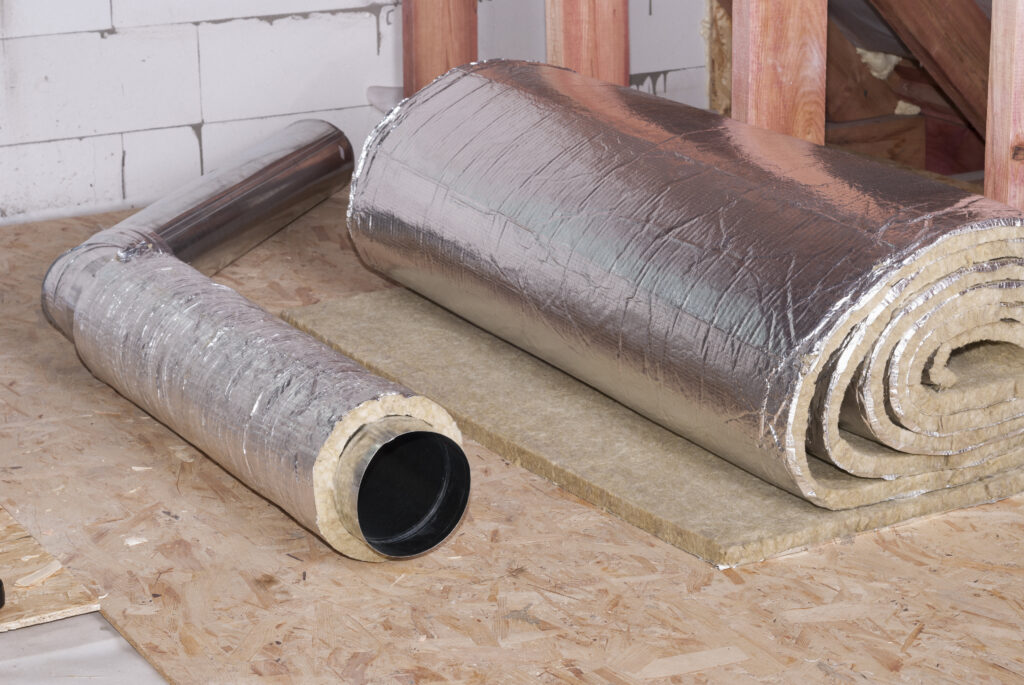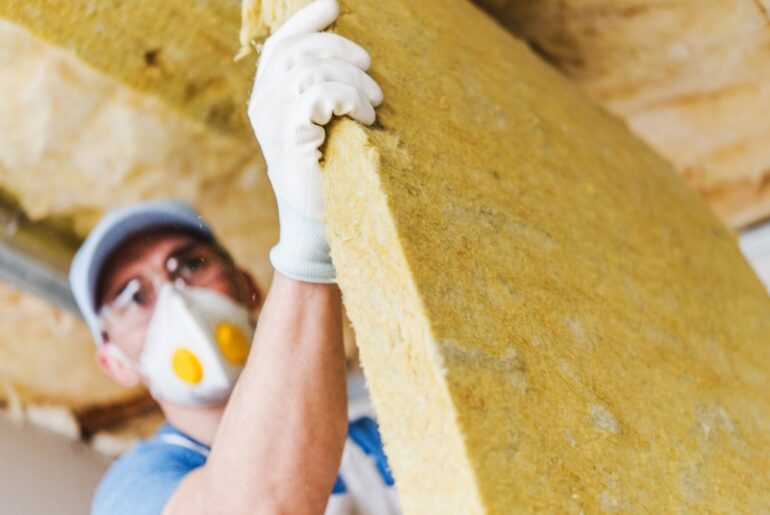Things have changed recently at the U.S. Dept of Energy where ductwork insulation regulations have been upgraded and have become more challenging for renovators and those building new.
The Zero Energy Ready Homes (ZERH) policy recommends that ductwork in some climate zones should be located within the building’s thermal envelope, or buried within the insulation to provide minimum cover of R-19.
In other regions, where humidity can pose problems, insulating your ducts could be counterproductive, instead, conditioning, i.e. sealing and dehumidifying an attic space will deliver better outcomes.
How Should I Insulate My Ductwork?
In many older buildings, the HVAC ductwork is sometimes in pretty poor condition. It could be due to water ingress, condensation, the action of pests, or physical damage from access to the area.
Is It Worth Renewing the Insulation?
Your local HVAC installer would probably recommend that badly damaged duct insulation isn’t worth renewing on its own. By the time it has been stripped back and re-taped with a new product, they could have renewed all of the ductwork runs in their entirety.
The positive with this method is that it will probably take less time and will therefore likely improve the bottom line.
Renewing the ductwork will also have the advantage of upgrading it to the newest, most compliant product on the market.
Another possible advantage is that the new ductwork will be clean. It won’t have any of the build-up or dirty air deposits that accumulate over time.
Can I Save Cash and Do It Myself?
If you are on a tight budget, goodness knows our homes sometimes make demands in all areas, then yes, get up in the loft and go for it.
If the damage is light, then simply repair that which needs it most. Re-taping joints and replacing torn patches of insulation isn’t too difficult.
Remember to replace any insulation that you might need to disturb in order to gain access, and always wear a respiratory mask and eye protection in case of dust.
A golden rule is that if all you need is a box cutter and a tape measure then you are good to go, but when you think you might need to get a screwdriver to access a damaged area, that’s when you need to call someone in.
Should I Condition My Attic?
There comes a point when we insulate an attic to such a degree that the temperature inside the roof space drops by several degrees. One of the reasons for the ZERH code changes is that the drive to lower energy use can give rise to new problems.
A cooler attic space is excellent for anyone needing to carry out maintenance or otherwise access the space, however, in some states, where humidity is an issue, lowering the temperature also lowers the dew point.
Without getting too technical, what this means is that the ductwork running across the floor of the attic becomes a dehumidifier and starts to sweat.
For example, in Oregon, it is recommended that the ductwork is buried R-19 deep in the insulation on the attic floor, with just 5% allowed to be exposed where it is attached to the air-handling equipment on top of the insulation. It keeps the ductwork warm and within the thermal envelope of the building.
In Florida, a solution is to use closed-cell foam insulation to seal off the attic space and install a dehumidifier to dry out the air. Venting only brings more moisture, on warm air, into the attic.
If you have recently had a radiant barrier installed it’s likely you might have noticed your system sweating a little. The answer is not to take the radiant barrier out again, but to install a dehumidifier instead, to dry out the cooler air.
Is R-Value Important?
The R-value of the insulation on your ductwork has minimum regulation stipulations dependent upon the size of the ducts. R-6 is the minimum value for 3” ductwork run within the thermal envelope of the house.
All new supply ductwork, that may be exposed to unconditioned areas of the house must be insulated to a minimum of R-8. All other ductwork must be insulated to R-6.
What Can I Use to Insulate My Ducts?
Any big box hardware store will be happy to sell you duct wrap for 50 cents a square foot, and you can come away with enough to re-wrap a three-bedroom house for less than $50. While you are there get a roll of aluminum tape, and a box cutter if you haven’t got one already.
However, wrapping your ducts is only half the story. If your system has been working away for the length of time it has taken for the original wrap to rot, then you can be sure that the joints have also deteriorated.
A proprietary mastic product will be needed to ensure that the duct joints are properly sealed before insulating.
How Do I Do A Good Job?
Take a rag and some white spirit and clean up all the joins. Run the system and check to see if there are any significant leaks. In some cases, you may need to replace a duct section before proceeding.
Once the joins are all clean and mastic sealed, you should begin to wrap the ducts to the minimum level required dependent upon the grade of wrap you are using.
Alternative Products
Insulated duct pipes can be ordered online and delivered to your door. Flexible pipes, either 5’ or 25’ lengths can mean that joins are minimized, and, because they are flexible, these ducts can get around any obstacle.
All you need is a decent steak knife, a pair of wire cutters to trim the duct to the right length, and plenty of duct tape to ensure a seal. It is recommended that, even though they are flexible, you keep runs as straight as possible to lessen turbulence within the duct, thereby maximizing efficiency.
The manufacturer states that the flexible duct must be pulled out to its 100% stretch position, otherwise, turbulence could cost you up to 50% loss of efficiency. Always follow the instructions provided!





